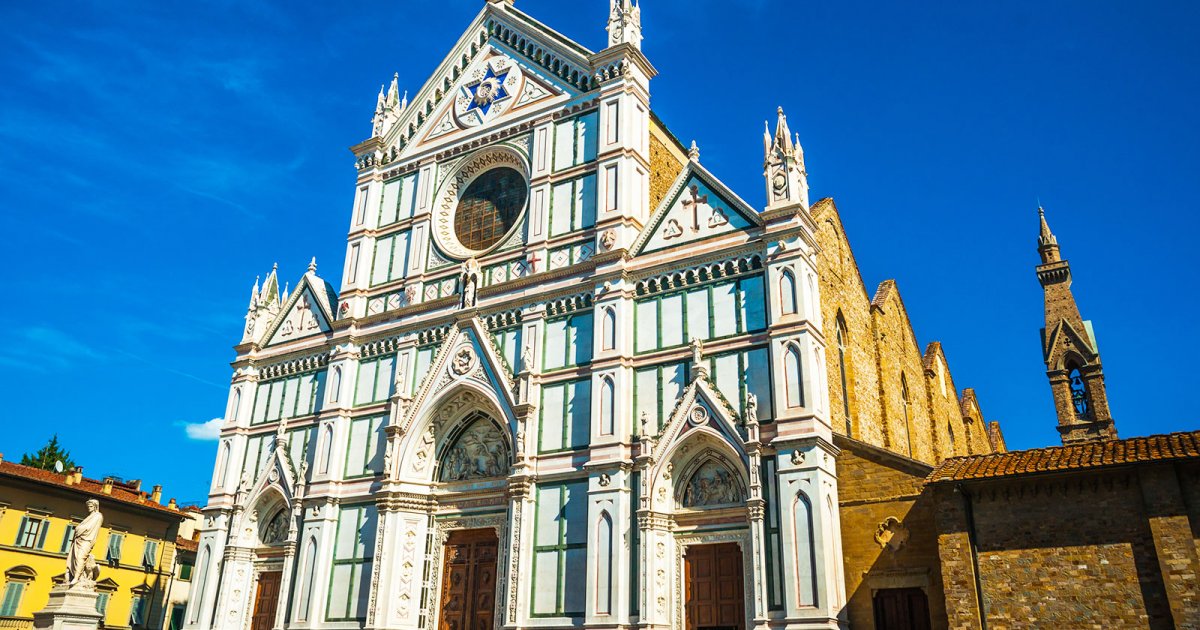SANTA CROCE, Exterior
 Language: English / USA
Language: English / USA
If you're wondering why this Franciscan basilica is called Santa Croce, or Holy Cross, you should know that it gets its name and originated from a fragment of the Holy Cross that was given to the Franciscan Order by King Louis IX of France in the mid-1200s. Before entering the basilica, I suggest walking around its exterior, especially to admire its majestic sides and beautiful Gothic windows. I'll summarize its history for you while you walk.
The present, grandiose basilica began construction at the end of the 13th century, probably based on the design of Arnolfo di Cambio, the great protagonist of Gothic architecture in Florence.
The Franciscans wanted a simple building that could contain a great number of people. Its structure is full of light and lightweight. To divulge the truths of the faith and the saints' examples in the most frank and persuasive way, the architect relied on painting and involved all the leading 14th-century Florentine artists. Just think, two-thirds of the basilica's interior is covered by fresco cycles: it's a real "Bible for the Poor", as the scenes of biblical episodes and of Jesus' life were defined in the Middle Ages because they could also be understood by the many faithful illiterates of those times.
Although some parts remained unfinished, including the façade and the bell tower, the church became a privileged burial site for Florentine families, as well as a temple for illustrious figures, especially in the field of art.
The convent you can see on the right side of the basilica was built and enlarged over the course of the 1400s with the creation of the precious Cappella dei Pazzi, or Pazzi Chapel, designed by Brunelleschi, and the large, magnificent Renaissance cloister. But Santa Croce was only completed in the middle of the 19th century, first with the construction of the slender bell tower with sandstone at its bottom, then followed by the façades of the basilica and convent in white and black marble, both in a Neo-Gothic style with little originality.
As I already mentioned, the Basilica of Santa Croce was the church that suffered the most damage in the terrible flood of Florence in 1966: the church and convent were overwhelmed by a five meter wave of mud, water, debris, and oil. It was the fifth and most serious flood in the basilica's troubled history.
FUN FACT: Santa Croce has long been the chosen burial site for artists, even those who are not Christian. The most famous is probably the poet Ugo Foscolo, who was buried 43 years after his death with a crowded ceremony.



